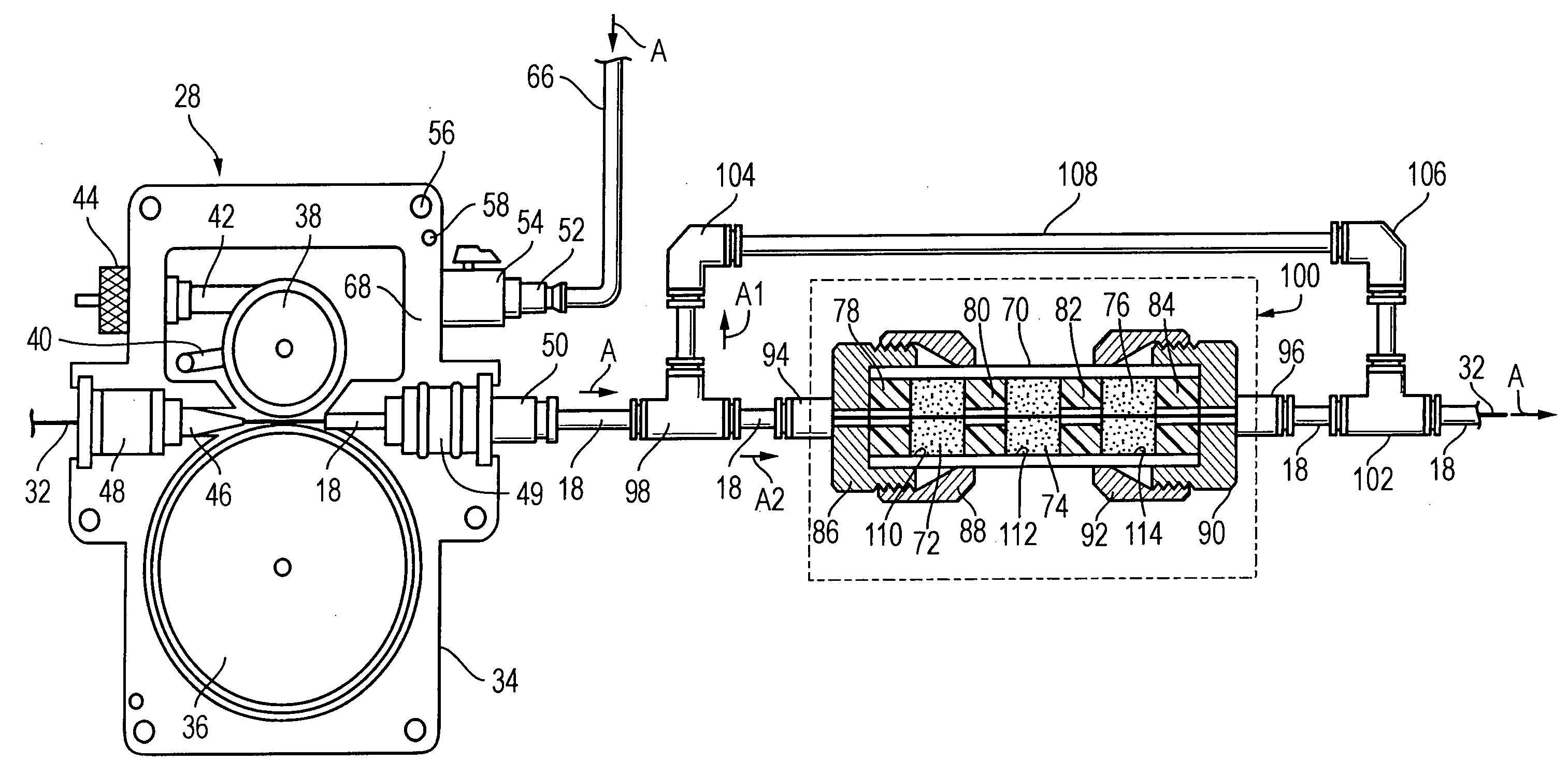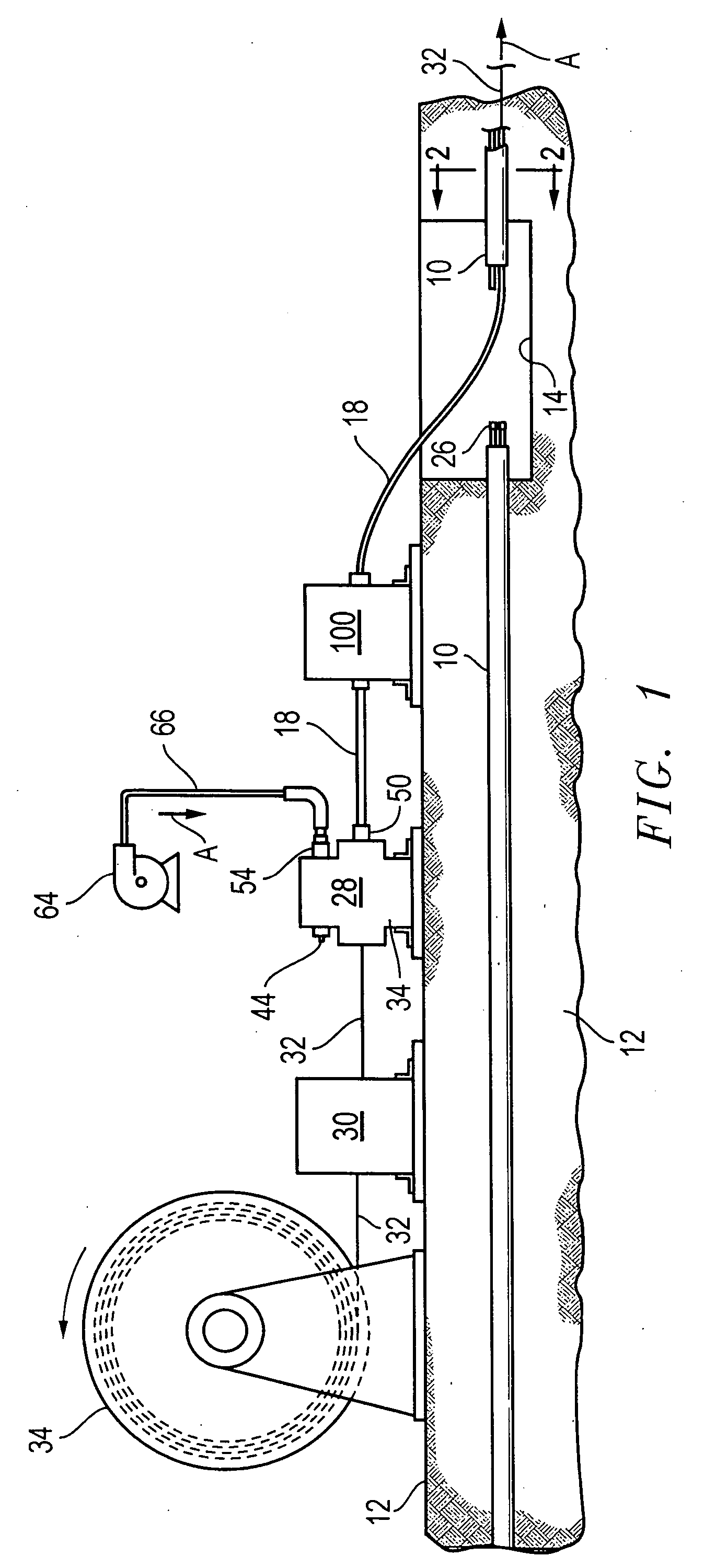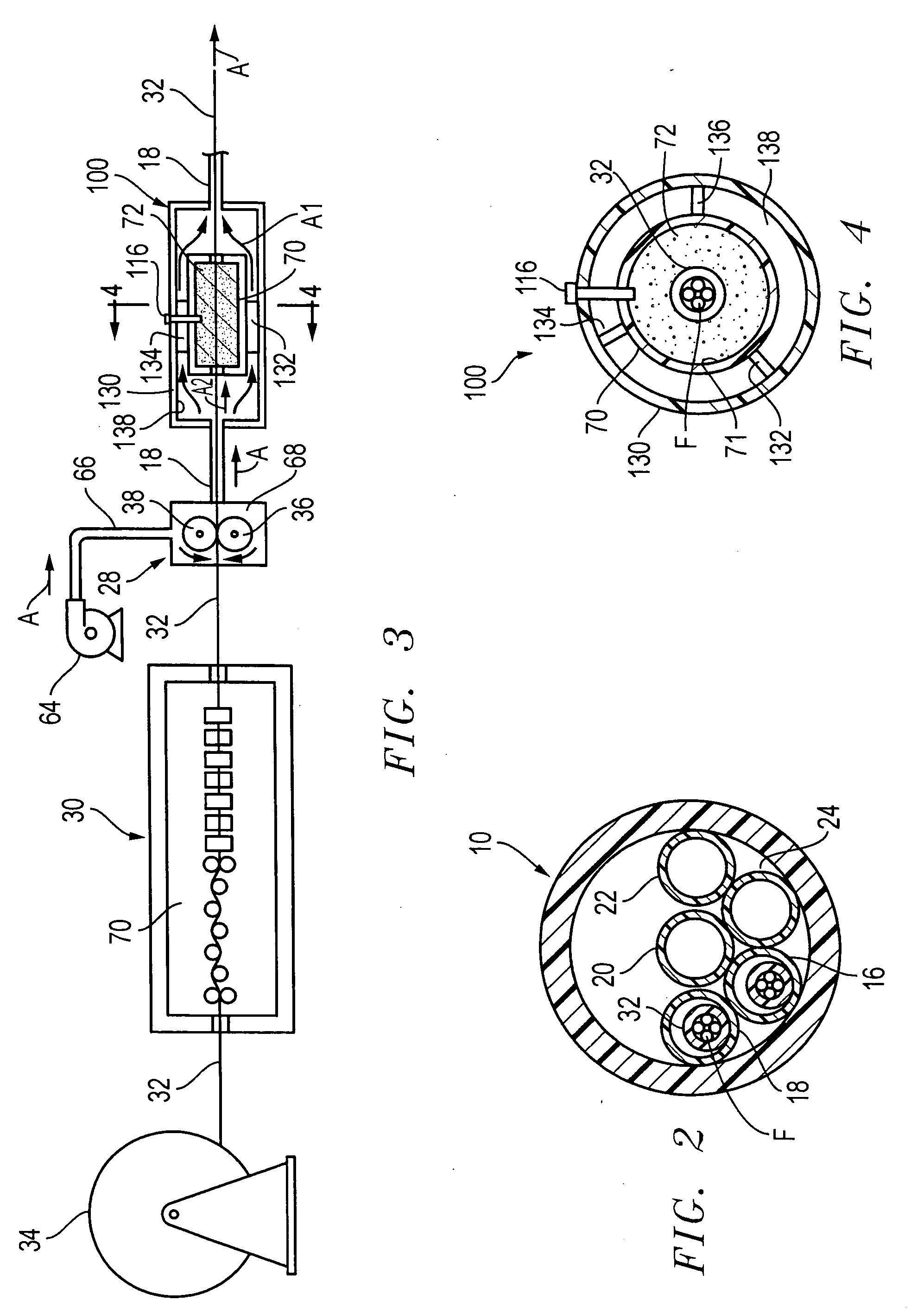Optical cable lubricator with reservoir
a technology of optical cable lubricator and reservoir, which is applied in the direction of cable installation apparatus, electrical apparatus, textile cables, etc., can solve the problems of high installation cost, time-consuming splices, and unsuitable large number of splice joints, so as to enhance the performance of splice installation
- Summary
- Abstract
- Description
- Claims
- Application Information
AI Technical Summary
Benefits of technology
Problems solved by technology
Method used
Image
Examples
example 1
4 HDPE Guide Tubes 12 / 9.6 mm in a Lubricated Ribbed 40 / 33 mm Protective Duct
[0114] First attempt: Installation in field trajectory without lubricator; protective duct was lubricated with water-based lubricant and a foam-plug was blown through. Blowing transport of guide tubes started with a rate of advance of 24 m / min with a blowing pressure of 3.2 bars and came to a stand-still after reaching 808 m in the duct trajectory, with a blowing pressure of 7.3 bars.
[0115] Second attempt: Installation on 1.8 m drum with duct (which is more difficult than blowing in a field trajectory), with bundle-lubricator 350 and protective duct lubricated with water-based lubricant and a foam-plug blown through. Blowing transport of guide tubes started with a rate of advance of 34 m / min with a blowing pressure of 3.5 bars and reached 950 m (end of duct) with a rate of advance of 38 m / min, with a blowing pressure of 6.2 bars.
[0116] An example to show the improvement of using the FIG. 11 lubricator emb...
example 2
HDPE 5.0 mm Cable in Un-Lubricated Ribbed 10 mm Guide Tube
[0117] First attempt: Installation with lubricator 100 shown in FIG. 5 and microduct un-lubricated. Blowing transport of cable started with a rate of advance of 78 m / min with a blowing pressure of 6 bar but dropped below 20 m / min, even though the blowing pressure was increased to 12 bar, because of frictional resistance after reaching 840 m in the duct trajectory.
[0118] Second attempt: Installation with new lubricator (lubricator 200 with external lubricator shown in FIG. 11) and microduct un-lubricated. Blowing transport of cable started with a rate of advance of 90 m / min with a blowing pressure of 6 bar and was still running at 20 m / min, now with the blowing pressure increased to only 10 bar, after reaching 1500 m in the duct trajectory.
[0119] Third attempt: Installation with the lubricator 200 shown as in FIG. 11 and microduct lubricated with water-based lubricant and a foam-plug blown through. Blowing transport of cabl...
PUM
 Login to View More
Login to View More Abstract
Description
Claims
Application Information
 Login to View More
Login to View More - R&D
- Intellectual Property
- Life Sciences
- Materials
- Tech Scout
- Unparalleled Data Quality
- Higher Quality Content
- 60% Fewer Hallucinations
Browse by: Latest US Patents, China's latest patents, Technical Efficacy Thesaurus, Application Domain, Technology Topic, Popular Technical Reports.
© 2025 PatSnap. All rights reserved.Legal|Privacy policy|Modern Slavery Act Transparency Statement|Sitemap|About US| Contact US: help@patsnap.com



